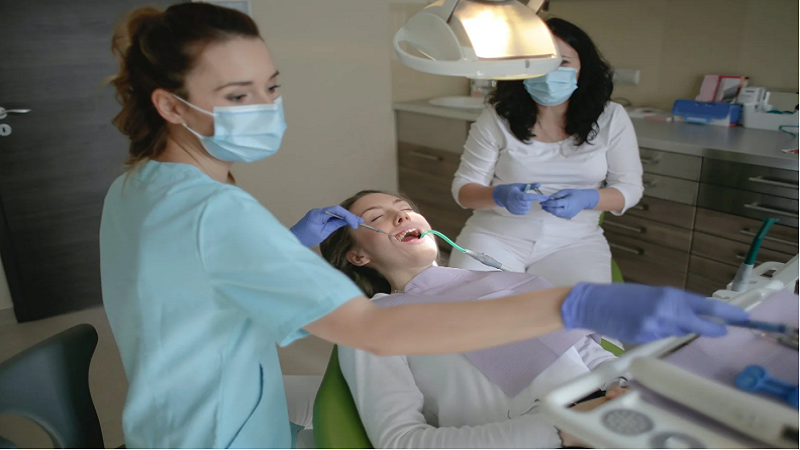Doctors, nurses, and healthcare providers have a very demanding job, and they face a sea of patients they have to take care of. It leaves them no or little time for taking notes. Moreover, because of this time constraint, chances of errors are increased, leading to misinterpretation and eventually to a missed diagnosis as well as delay in treatment.
Medical transcription services, therefore, provide a dependable and effective solution, which assists healthcare providers in overcoming the above challenges. They save doctors more time to focus on patient care while ensuring comprehensive and accurate medical records.
In this article, we will discuss how medical transcription improves healthcare by securing time and decreasing the level of negative consequences. Let’s begin.
The Role of Medical Transcription Services
It is the process of converting audio medical records narrated by healthcare professionals into written text. The main purpose is to keep a record of the patient’s medical history, electronic health records, files, and other documentation.
Medical practitioners, while operating from different settings, often dictate patient information and treatment plans using voice recording software or devices. Here come the transcription services. They are trained professionals who listen to the recordings and transcribe them precisely into written documents. Wait, this doesn’t end here. They also ensure that the medical terminology, grammar, and formatting are adapted to the patient’s linguistic and cultural nuances.
Professional transcribers take care of all types of healthcare documents, including examination reports, discharge summaries, operative reports, consultation notes, test reports, and informed consent form translation services.
Though medical and healthcare documents contain sensitive content, quality transcription is essential to ensure clear communication, standardized documentation, and compliance with legal and regulatory requirements.
Saving Time in Healthcare with Medical Transcription
Streamlining Documentation
Documentation itself is a hectic task, and when it comes to medical documentation within little time, it creates panic. Medical transcription takes care of it. It speeds up the process of generating error-free patient records. With transcription services, it becomes easy to take detailed notes of healthcare providers’ observations and instructions and quickly convert them into documents.
Enhanced Focus on Patient Care
Communicating with patients, listening to concerns, and diagnosing the problem becomes a challenge when there are diversions. With transcriptionists handling the documentation, medical providers can direct their whole attention toward patients. It enhances engagement, allowing practitioners to better and meaningfully deal with patients. This improves the quality of healthcare and patient satisfaction.
Use of Advanced Technology
Modern transcription services leverage advanced speech recognition tools to automate parts of the transcription process. These tools expedite the transcription process by converting words into text, resulting in faster turnaround times. However, to eliminate errors in the automated versions, human transcriptionists often review and refine the outputs.
Reducing Errors in Medical Documentation
Accuracy in Medical Records
Ensuring precision in healthcare is crucial. Medical transcriptionists are highly skilled professionals with extensive knowledge of complex terminology. With their expertise, they ensure that the information is easily accessible for everyone interpreting and transcribing difficult information accurately.
Moreover, it reduces the chances of mistakes such as incorrect abbreviations and misinterpretations. Poor quality transcription or errors in medical documents can lead to misdiagnosis and improper treatments.
Minimizing Miscommunication
In collaborative care settings, doctors and practitioners are highly dependent on clear and structured documentation. Well-organized medical records facilitate effective communication among teams, reducing the chances of miscommunication that might arise due to incomplete and ambiguous documentation.
Compliance with Regulations
Adherence to the region-specific regulatory standards is mandatory for the smooth functioning of healthcare procedures. Professional transcription services ensure that all documents are prepared strictly in compliance with legal standards. For example, to operate smoothly within the United States, adherence to the Health Insurance and Accountability Act or HIPAA is compulsory. Meeting these established rules also ensures the protection of the patient’s confidential and sensitive information.
Quality Assurance
Transcription is a lengthy process. Ensuring accuracy becomes challenging when handling lengthy content and complex terminology. To maintain consistency, transcriptionists implement rigorous quality control. The process includes multiple reviews and editing steps by specialists. This is to detect and correct errors, ensuring that the document meets the standards of accuracy and completeness.
Leveraging Outsourced Medical Transcription
Hiring a transcription company is more affordable than hiring an in-house workforce. It eliminates the need for maintaining a proper team and managing the affairs, reducing the costs related to salaries, benefits, office space, and equipment.
You can pick services that provide a flexible pricing structure. It allows healthcare providers to pay only for the volume of transcription work needed, avoiding fixed costs. Moreover, you get a highly qualified workforce with no training costs.
Also, outsourced services scale up and down based on the needs of your practices and the size of the clinic and hospital. Though they are available 24/7, the time constraint is no longer a problem. You get your transcribed version on the promised time regardless of the location of the healthcare practice.
The Future of Medical Transcription
AI is transforming all industries, and medical or healthcare is no exception. It is revolutionizing this industry by automating the transcription process, ensuring accuracy. These tools are smart enough to recognize the speech patterns, medical terminology used in the conversation, and accents. The technology is improving continuously, making it a more reliable source for maintaining consistency and streamlining the transcription process.











